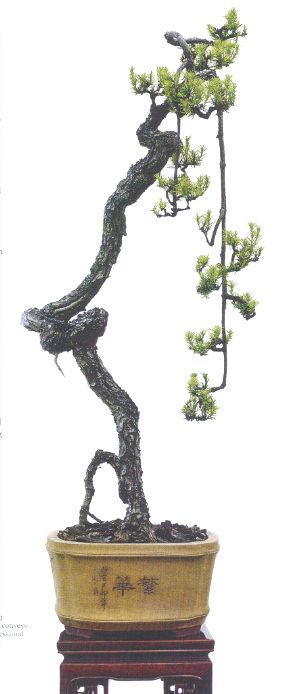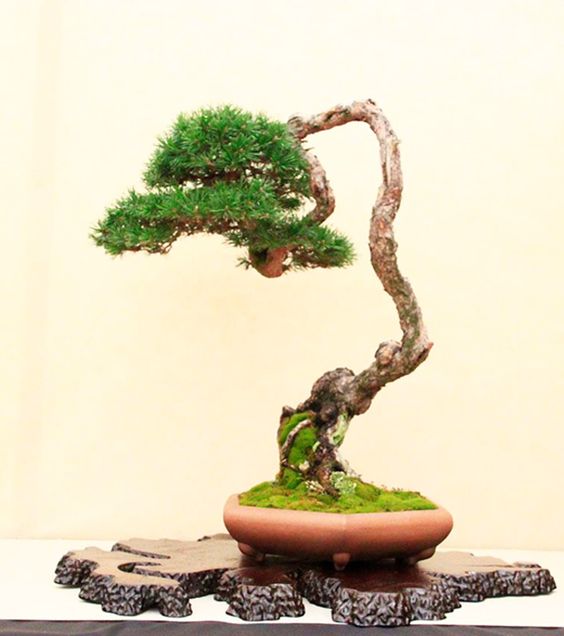Bunjin Bonsai: Take Your Bonsai To Extremes
7th Mar 2016
Do you have a Bonsai that wants to be daring? One whose natural growth just doesn't seem to fit any of the standard Bonsai styles? Or perhaps you're just looking to craft a Bonsai that's so unusual it stands out, even among other Bonsai?

Then the Bunjin technique might be for you and your Bonsai.
Bunjin (which is also sometimes called Wenjen in Chinese or Literati in English) is the abstract expressionist form of Bonsai crafting and cultivation. While it's not entirely without rules, a Bunjin design deliberately breaks most traditional Bonsai styles. A Bunjin might even be considered "ugly" in contrast to the standard forms, but only by those who are bound by convention.
Bunjin isn't for Bonsai beginners and requires a good familiarity with the use of tools to train your tree into deliberate shapes. As an advanced technique, however, it can create Bonsai which are truly unique and distinctive.
What Makes A Bunjin Bonsai?
Bunjin celebrates the uniqueness and diversity of tree life. Trees are among the most adaptive plants on Earth, and those in challenging situations can often grow in truly surprising ways. Bunjin seeks to replicate this, taking the growth of a Bonsai to innovative extremes.
The Bonsai master Quinquan Zhao defines four key characteristics of a Bunjin Bonsai:
- Aloofness
- Sparseness
- Plainness
- Refined Elegance
A Bunjin Bonsai is usually quite tall, with little or no tapering in the trunk and sparse leaves. Generally, foliage is trimmed off except at the very top of the tree, with no branches occurring below the top 1/3 of the trunk. This may require significant cutting away of the trunk as it grows, to maintain the thin look.
However, while many Bunjin are simply tall and thin, that's only the beginning. All manner of trunk designs are acceptable as long as the trunk is long and thin, including designs which would be unthinkable in other schools. For example, the trunk could be curly, or criss-cross back on itself, or have extremely hard/sharp angles which would rarely occur in nature.
It's also relatively popular to have a cascade look on top of a tall tree, so it that it appears hunched over. A Bunjin tree could have a downright painful appearance, twisted in ways no plant ever normally achieves. This can be done to achieve a beauty-in-agony effect for an "emo" Bonsai.
Or taken to real extremes, this "painful" twisting could even achieve a comical effect; a sort of slapstick tree.
To be clear, the Bonsai should actually be completely happy and healthy. It merely gives the appearance of pain, since trees can bend in ways animals cannot. This dichotomy is one of the alluring elements of Bunjin.

Warnings When Creating a Bunjin Bonsai
The Bunjin style will be more stressful than traditional styles of Bonsai, and should only be attempted on breeds which are particularly hearty and resistant. The Chinese Elm and similar species would be good for learning to craft Bunjin.
The other major concern is that a Bunjin will almost always be top-heavy. Keeping them outdoors is not recommended, as they'll be more vulnerable to weather. Likewise, a wider pot is suggested, to help lower the center of balance a bit. Or, if you want to have a bit of an optical illusion, you might try a thinner pot that's glued to its base so it can't tip over.
Bunjin isn't for the faint-of-heart, but it can create Bonsai which are absolutely unique and filled with personality. Just be sure to consult the appropriate care guides for your species, to ensure it stays healthy throughout the training process!
